Approvisionnement en capteurs
South-Electronic
Votre fournisseur privilégié de capteurs
Bienvenue chez South-Electronic, votre partenaire de confiance pour l’approvisionnement en capteurs de haute qualité.
Nous sommes spécialisés dans la précision et la fiabilité pour une large gamme d’applications électroniques. De l’électronique grand public à l’automobile et à l’industrie, nos services d’approvisionnement garantissent le bon déroulement et l’efficacité de vos projets. Forts de notre engagement envers l’excellence, nous garantissons des performances optimales pour chaque produit livré.
Pourquoi choisir South-Electronic ?
-
Solutions personnalisées
Sur mesure pour votre projet.
Travaillons en étroite collaboration avec South-Electronic pour personnaliser votre solution de capteurs et garantir qu'elle réponde précisément à vos exigences spécifiques. Qu'il s'agisse d'un composant spécialisé ou d'une conception complexe, vous pouvez compter sur nous pour vous fournir les produits dont vous avez besoin. -
Qualité supérieure
Vous méritez le meilleur, et la qualité est notre priorité absolue.
Grâce à nos processus de contrôle qualité rigoureux, comprenant des inspections et des tests approfondis, nous garantissons que vos produits répondront aux normes les plus strictes. Nos capteurs sont sans défaut, vous pouvez donc compter sur leur fiabilité pour votre production. -
Communication claire
Nous vous offrons un service réactif, clair et efficace.
C'est pourquoi nous vous offrons une assistance claire et réactive tout au long du processus. Que vous ayez une question ou besoin d'une mise à jour, nous sommes là pour vous tenir informé et nous assurer que votre projet reste sur la bonne voie. -
Prix compétitifs
Vous recherchez la meilleure qualité au meilleur prix.
C'est pourquoi nous proposons des capteurs de haute qualité à des prix compétitifs. Maximisez vos marges bénéficiaires sans sacrifier vos exigences. Nous proposons des solutions économiques sans compromis sur la qualité, pour que vous gardiez une longueur d'avance sur la concurrence. -
Expédition rapide dans le monde entier
Vous avez besoin d'un partenaire capable de suivre le rythme rapide de votre activité.
Nous proposons une expédition internationale avec des délais d'exécution rapides, afin que vos capteurs PSensors arrivent quand vous en avez besoin. Grâce à notre logistique fiable, vous n'avez pas à vous soucier des retards. Vous pouvez respecter les délais et assurer le bon déroulement de votre production.
Projets similaires que nous avons réalisés
Avis clients
Questions fréquentes
Questions les plus fréquentes
Envoyez-nous un message
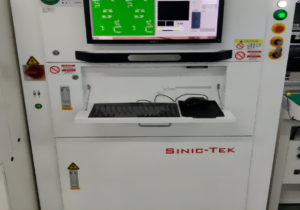
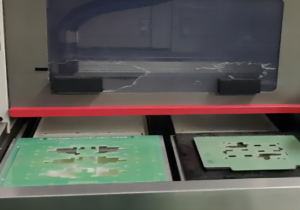
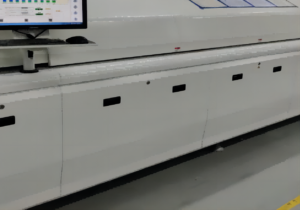
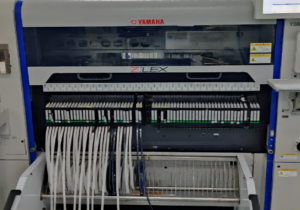
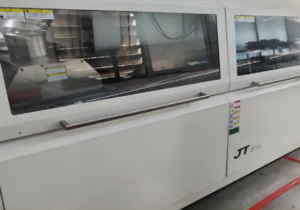
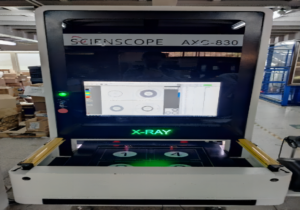

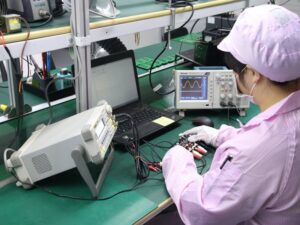

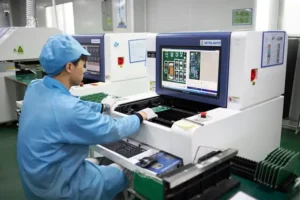



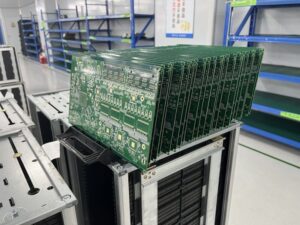

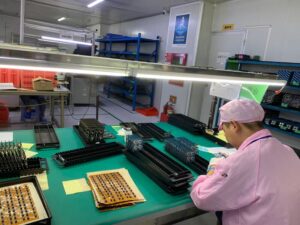



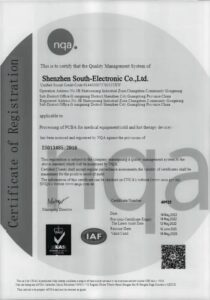
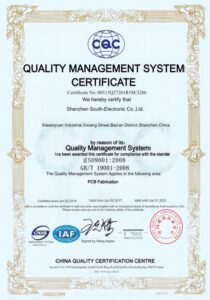





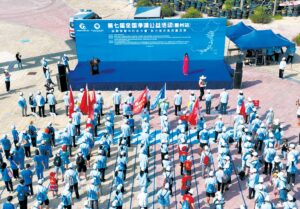
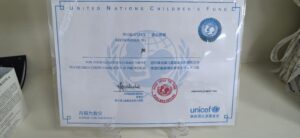
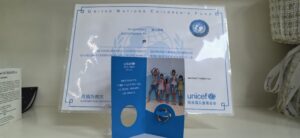

Le Guide Complet pour la Sélection de Capteurs
Sommaire
Chapitre 1
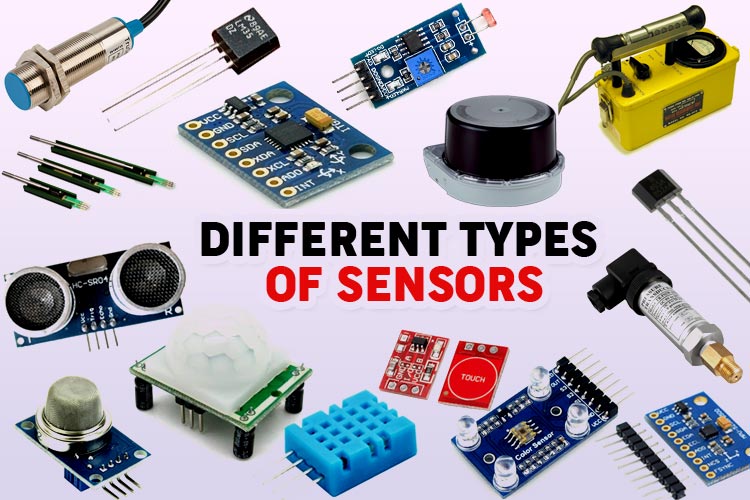
Comprendre les Types de Capteurs et leurs Applications
Les capteurs sont essentiels à la technologie moderne, fournissant des données essentielles pour une large gamme d’applications. Il existe plusieurs types de capteurs, chacun conçu pour des fonctions spécifiques, et la compréhension de leurs caractéristiques uniques est cruciale pour sélectionner le capteur approprié pour une application particulière. Voici une plongée plus approfondie dans certains des types de capteurs les plus courants et leurs applications respectives.
Capteurs de Température
Les capteurs de température sont conçus pour mesurer les changements de température, et ils sont utilisés dans une vaste gamme d’industries et de dispositifs. Ces capteurs peuvent détecter les fluctuations de température en temps réel, fournissant des données critiques pour garantir que les systèmes fonctionnent dans des paramètres sûrs et efficaces.
- Applications:
- Systèmes HVAC : Les capteurs de température sont essentiels pour réguler les systèmes de chauffage, de ventilation et de climatisation pour maintenir des conditions de climat intérieur optimales.
- Automobile : Dans les véhicules, les capteurs de température surveillent la température du moteur, la température de la cabine et même la pression des pneus pour assurer la sécurité et le confort.
- Électronique grand public : Les appareils tels que les smartphones, les ordinateurs portables et les gadgets portables utilisent des capteurs de température pour prévenir la surchauffe et optimiser les performances.
- Types populaires:
- Thermocouples : Ces capteurs mesurent la température par la différence de tension entre deux métaux. Ils sont connus pour leur large plage de température et sont utilisés dans des environnements difficiles, tels que les équipements industriels.
- Détecteurs de température à résistance (RTD) : Les RTD mesurent la température en corrélant la résistance d’un matériau (généralement le platine) avec la température. Ils offrent une grande précision et stabilité, ce qui les rend idéaux pour les applications scientifiques et industrielles.
Capteurs de Pression
Les capteurs de pression mesurent la force exercée par les gaz ou les liquides dans un système. Ces capteurs sont essentiels pour surveiller et contrôler divers processus où les niveaux de pression affectent directement la sécurité, l’efficacité et les performances.
Applications:
- Systèmes automobiles : Les systèmes de surveillance de la pression des pneus (TPMS) utilisent des capteurs de pression pour avertir les conducteurs lorsque la pression des pneus est trop basse, améliorant ainsi la sécurité et l’efficacité du carburant.
- Machines industrielles : Dans les usines et les installations de traitement, les capteurs de pression sont utilisés pour surveiller les systèmes tels que les pompes, les réservoirs et les pipelines pour prévenir les dysfonctionnements et optimiser le flux de travail.
- Appareils médicaux : Les capteurs de pression sont couramment utilisés dans les équipements médicaux, tels que les moniteurs de pression artérielle, les ventilateurs et les pompes à perfusion, où des lectures précises sont essentielles.
Types populaires:
- Capteurs de pression piézoélectriques : Ces capteurs génèrent une charge électrique lorsqu’ils sont soumis à une pression, ce qui les rend idéaux pour mesurer les changements dynamiques de pression. Ils sont souvent utilisés dans des applications telles que les systèmes automobiles et les machines industrielles.
- Capteurs de pression capacitifs : Ces capteurs détectent les changements de pression en mesurant la variation de capacité. Ils sont connus pour leur précision et leur fiabilité, ce qui les rend adaptés aux applications industrielles et médicales.
Capteurs de Proximité
Les capteurs de proximité détectent la présence ou l’absence d’objets dans une plage définie sans contact physique. Ces capteurs sont largement utilisés dans l’automatisation, la robotique et les systèmes de sécurité, où une détection précise est requise.
Applications:
- Systèmes d’automatisation : Sur les lignes de production, les capteurs de proximité aident à détecter la position des pièces et des produits, permettant ainsi aux processus automatisés et aux bras robotiques de fonctionner efficacement.
- Téléphones intelligents : Ces capteurs sont essentiels dans les téléphones intelligents modernes pour des fonctionnalités telles que l’assombrissement de l’écran lorsqu’il est tenu près du visage pendant un appel.
- Systèmes de sécurité : Les capteurs de proximité sont utilisés dans les systèmes de sécurité pour détecter les intrusions ou la présence de personnes dans une zone désignée.
Types populaires:
- Capteurs de proximité inductifs : Ces capteurs détectent les objets métalliques en mesurant les changements d’inductance. Ils sont couramment utilisés dans les systèmes d’automatisation industrielle.
- Capteurs de proximité capacitifs : Ces capteurs peuvent détecter à la fois les objets métalliques et non métalliques en mesurant les changements de capacité. Ils sont idéaux pour les applications où les objets peuvent ne pas être métalliques, comme dans la fabrication de plastiques.
- Capteurs de proximité ultrasonores : Ces capteurs utilisent des ondes sonores pour détecter les objets et mesurer la distance. Ils sont couramment utilisés dans la robotique et les systèmes d’assistance au stationnement de véhicules.
Capteurs de Mouvement
Les capteurs de mouvement détectent le mouvement d’objets ou de personnes dans une zone définie, ce qui les rend essentiels pour la sécurité, la gestion de l’énergie et les applications d’interaction utilisateur.
Applications:
- Systèmes de sécurité : Les capteurs de mouvement sont utilisés dans les systèmes d’alarme pour détecter les mouvements non autorisés, déclenchant des alertes et des caméras pour capturer les intrus potentiels.
- Contrôle des éclairages automatiques : Ces capteurs aident à réduire la consommation d’énergie en allumant les lumières lorsque quelqu’un entre dans une pièce et en les éteignant lorsque la pièce est vide.
- Appareils de jeu : Dans les systèmes de jeu, les capteurs de mouvement permettent aux joueurs d’interagir avec le jeu par le mouvement physique, améliorant ainsi l’expérience utilisateur.
Types populaires:
- Capteurs de mouvement infrarouge (IR) : Ces capteurs détectent les radiations infrarouges émises par les objets, ce qui les rend idéaux pour les applications telles que les systèmes de sécurité et les contrôles d’éclairage automatiques.
- Capteurs de mouvement micro-ondes : Les capteurs micro-ondes émettent des ondes radio à haute fréquence pour détecter le mouvement. Ils sont souvent utilisés dans des environnements où les capteurs infrarouges peuvent ne pas être efficaces, tels que à travers les murs ou dans de grands espaces ouverts.
Conclusion
Chaque type de capteur joue un rôle critique dans diverses industries, des automobiles à l’électronique grand public, en passant par les soins de santé. Comprendre les caractéristiques spécifiques et les applications des capteurs tels que les capteurs de température, de pression, de proximité et de mouvement est essentiel pour sélectionner le capteur approprié pour vos besoins. Par exemple, les industries automobiles s’appuient lourdement sur les capteurs de pression et de température pour la sécurité et l’efficacité, tandis que les capteurs de proximité et de mouvement sont souvent utilisés dans l’électronique grand public pour une interaction utilisateur améliorée et une commodité accrue. En choisissant le capteur approprié, les entreprises peuvent optimiser les performances, assurer la sécurité et répondre à des besoins opérationnels spécifiques avec précision.
Chapitre 2
Considérations clés pour la sélection de capteurs
La sélection du capteur approprié pour votre application est cruciale pour assurer les performances optimales, la fiabilité et la longévité. Étant donné la grande variété de capteurs disponibles, chacun avec des spécifications différentes, la sélection du bon capteur implique de considérer soigneusement plusieurs facteurs clés qui auront un impact direct sur l’efficacité et la fonctionnalité de votre système. Voici les facteurs les plus importants à prendre en compte :
Spécifications de performance
Les performances du capteur constituent l’un des facteurs les plus importants à prendre en compte lors de la sélection du capteur approprié pour votre application. Les spécifications critiques à évaluer incluent :
- Précision : Quelle est la précision du capteur dans la mesure du paramètre intentionnel ? Pour les applications nécessitant une grande précision, comme les appareils médicaux, même de petites erreurs de mesure peuvent entraîner des conséquences importantes. Par exemple, un capteur de température dans un appareil médical doit être très précis pour assurer un fonctionnement correct et la sécurité des patients.
- Plage de mesure : Assurez-vous que la plage du capteur est appropriée pour votre application. Par exemple, un capteur de pression utilisé dans les applications automobiles nécessite une plage de pression différente de celle utilisée dans les processus industriels.
- Sensibilité : Cela se réfère à la capacité du capteur à détecter de petits changements dans le paramètre mesuré. Dans les environnements où les changements mineurs sont critiques (comme la surveillance environnementale ou les appareils biomédicaux), un capteur très sensible est essentiel pour détecter des variations subtiles dans les données.
Facteurs environnementaux
Les capteurs fonctionnent souvent dans des environnements spécifiques qui peuvent avoir un impact significatif sur leurs performances. Ces conditions environnementales doivent être prises en compte lors du processus de sélection. Les facteurs environnementaux clés à prendre en compte incluent :
- Température : Les capteurs ne peuvent fonctionner que dans certaines plages de température. Si votre capteur sera exposé à des températures extrêmes, assurez-vous qu’il peut résister à ces conditions sans dégradation des performances.
- Humidité : Les capteurs utilisés dans les environnements extérieurs ou industriels doivent être résistants à l’humidité et à la condensation, qui peuvent corroder les composants internes et affecter la précision des mesures.
- Exposition chimique : Pour les capteurs utilisés dans des environnements hostiles (tels que les usines ou les laboratoires), l’exposition aux produits chimiques ou aux substances corrosives est une considération critique. Les capteurs doivent être fabriqués à partir de matériaux durables, tels que l’acier inoxydable ou des revêtements protecteurs, pour résister à la corrosion.
- Vibrations et chocs : Dans les applications telles que l’automobile ou les machines industrielles, les capteurs doivent être suffisamment robustes pour résister aux vibrations, aux chocs et aux contraintes physiques qui peuvent affecter leurs performances au fil du temps.
En évaluant soigneusement les conditions environnementales dans lesquelles le capteur sera déployé, vous pouvez choisir un capteur qui peut fonctionner de manière fiable et résister aux défis spécifiques de cet environnement.
Compatibilité
La compatibilité du capteur est un autre facteur crucial pour assurer une intégration transparente avec vos systèmes existants. Avant de sélectionner un capteur, considérez :
- Protocoles de communication : Les capteurs communiquent avec d’autres appareils et systèmes via divers protocoles, tels que I2C, SPI ou sorties analogiques. Il est essentiel que la méthode de communication du capteur soit compatible avec votre système existant pour éviter les problèmes d’intégration.
- Exigences de puissance : Les capteurs différents peuvent nécessiter des sources d’alimentation différentes, que ce soit une alimentation par batterie, une basse tension ou une alimentation secteur. Il est important de sélectionner un capteur dont les exigences de puissance correspondent à l’alimentation disponible dans votre système.
- Dimensions physiques : Les capteurs sont disponibles dans diverses tailles et formes. Assurez-vous que le capteur s’intégrera physiquement dans votre système ou appareil sans causer d’interférences avec d’autres composants.
En garantissant que votre capteur est compatible avec les autres composants matériels et logiciels de votre système, vous éviterez les problèmes d’intégration et aiderez à maintenir les performances globales du système.
Durabilité et durée de vie
La durabilité et la durée de vie prévue d’un capteur sont critiques, en particulier dans les environnements industriels ou hostiles où la maintenance ou le remplacement fréquents peuvent être coûteux et perturbateurs. Les facteurs à évaluer incluent :
- Matériaux et construction : Les matériaux utilisés dans la construction du capteur peuvent avoir un impact sur sa durabilité. Par exemple, les capteurs fabriqués à partir de matériaux de haute qualité, résistants à la corrosion, tels que l’acier inoxydable ou des plastiques spécialisés, dureront plus longtemps et fonctionneront mieux dans des conditions difficiles.
- Durée de vie prévue : Comprenez la durée de vie prévue du capteur par le fabricant. Les capteurs durables ne réduisent pas seulement les coûts de maintenance mais également les temps d’arrêt et les défaillances potentielles du système.
- Exigences de maintenance : Considérez la facilité d’entretien du capteur. Les capteurs qui nécessitent une recalibration ou des soins spéciaux fréquents peuvent ne pas être idéaux dans les applications où une maintenance minimale est préférée.
En sélectionnant des capteurs durables avec une longue durée de vie, vous pouvez minimiser les perturbations opérationnelles et les coûts de maintenance, améliorant ainsi l’efficacité de votre projet global.
Coût
Si les performances et la fiabilité sont critiques, le coût du capteur est toujours une considération importante. Équilibrer votre budget avec les capacités du capteur est essentiel pour trouver la solution la plus rentable. Considérez :
- Contraintes budgétaires : Si votre projet a un budget strict, vous devrez peut-être donner la priorité aux fonctionnalités essentielles plutôt qu’aux spécifications premium. Par exemple, un capteur moins cher peut répondre aux exigences d’une application industrielle générale, tandis qu’un capteur haut de gamme avec des fonctionnalités avancées peut être nécessaire pour des tâches de précision dans la recherche ou les domaines médicaux.
- Valeur à long terme : Parfois, dépenser plus d’argent initialement pour un capteur de haute qualité peut économiser des coûts à long terme en réduisant les besoins de maintenance et en améliorant l’efficacité du système.
- Coût total de possession : Au-delà du coût initial d’achat, considérez le coût total de possession, y compris l’installation, la maintenance et les temps d’arrêt possibles. Un capteur moins cher peut nécessiter des remplacements plus fréquents ou entraîner des coûts opérationnels plus élevés au fil du temps.
En équilibrant le coût avec les spécifications requises, vous pouvez vous assurer que le capteur sélectionné répond à vos besoins sans dépasser votre budget.
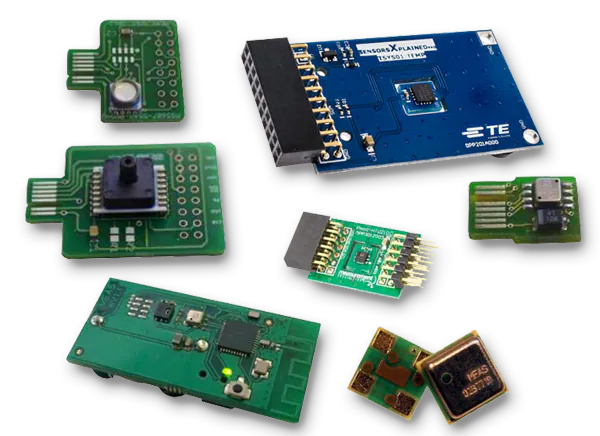
Chapitre 3
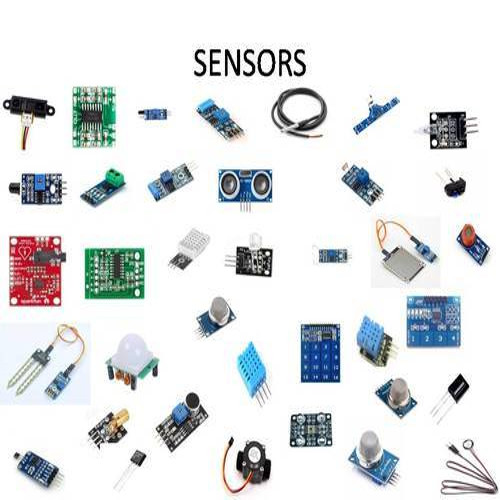
L'Importance de l'Assurance de la Qualité dans la Sourcing de Capteurs
L’assurance de la qualité est un facteur essentiel dans la sourcing de capteurs. Les capteurs de haute qualité sont la colonne vertébrale de systèmes fiables et durables, et ils jouent un rôle vital pour garantir que vos appareils ou machines fonctionnent de manière optimale au fil du temps. Voici pourquoi l’assurance de la qualité est si importante lors de la sourcing de capteurs :
Tests et Certifications
Les fabricants de capteurs réputés adhèrent aux normes de qualité internationales et aux certifications, telles que l’ISO 9001, qui démontrent que leurs produits répondent aux critères de qualité reconnus au niveau mondial. Ces certifications garantissent que les capteurs ont subi des tests approfondis pour confirmer qu’ils répondent aux spécifications requises en matière de sécurité, de fiabilité et de performance.
En plus des certifications des fabricants, les tests de tierce partie offrent une couche supplémentaire de crédibilité. Les laboratoires de test indépendants vérifient que les capteurs répondent ou dépassent les benchmarks de performance attendus, fournissant un niveau supplémentaire de garantie concernant leur fiabilité et leur fonctionnalité dans des conditions réelles.
Procédures de Contrôle de la Qualité
Le contrôle de la qualité est au cœur de tout processus de fabrication fiable. Pour les capteurs, cela implique une série de procédures soigneusement gérées pour garantir la cohérence et la performance de chaque unité. Ces procédures comprennent :
Tests de lots : Dans ce processus, des échantillons aléatoires sont pris de chaque lot de production et rigoureusement testés pour vérifier que l’ensemble du lot répond aux normes de qualité. Cela aide à identifier tout défaut potentiel ou variation de performance avant que les capteurs ne soient expédiés.
Inspections visuelles et fonctionnelles : Les fabricants effectuent souvent des inspections visuelles pour vérifier les défauts physiques (par exemple, fissures, rayures ou connecteurs endommagés) et des vérifications fonctionnelles pour garantir que les capteurs fonctionnent dans les paramètres définis.
En mettant en œuvre ces processus de contrôle de la qualité rigoureux, les fabricants peuvent minimiser le risque de défauts et livrer des capteurs qui fonctionnent de manière cohérente comme prévu.
Documentation
L’un des composants essentiels de l’assurance de la qualité est la documentation. Les capteurs de haute qualité sont accompagnés d’une documentation complète qui offre de la transparence et de la traçabilité. Cette documentation comprend souvent :
- Rapports de tests : Des rapports détaillés des tests d’assurance de la qualité, confirmant les performances et la fonctionnalité du capteur.
- Certificats de conformité : Des certificats qui prouvent que le capteur répond à des normes réglementaires ou à des exigences spécifiques de l’industrie.
- Spécifications des matériaux : Des informations sur les matériaux utilisés pour fabriquer les capteurs, ce qui est particulièrement important pour les applications où la durabilité ou la résistance du capteur à des environnements hostiles est critique.
Ces documents servent de preuve que le capteur a répondu aux normes de qualité requises et sont essentiels pour valider la pertinence du capteur pour votre application spécifique.
Réputation du Fournisseur
La sélection d’un fournisseur réputé est l’un des moyens les plus efficaces pour garantir la qualité de vos capteurs. Les fournisseurs ayant une solide réputation pour la livraison de produits de haute qualité sont plus susceptibles de fournir des capteurs fiables et précis. Pour évaluer la fiabilité d’un fournisseur, considérez :
- Recherche sur les antécédents du fournisseur : Renseignez-vous sur l’historique du fournisseur, sa présence sur le marché et les certifications ou les prix qu’il a reçus.
- Lecture des avis clients : Les avis des autres entreprises et des clients qui ont utilisé les capteurs du fournisseur peuvent fournir des informations précieuses sur la qualité et la fiabilité de leurs produits.
- Demande de références : Si nécessaire, demandez au fournisseur des références de clients précédents pour mieux comprendre la qualité de leurs produits et leur service client.
En collaborant avec des fournisseurs de confiance, vous réduisez le risque de recevoir des capteurs de mauvaise qualité et vous assurez que votre projet bénéficiera de composants fiables et à haute performance.
En se concentrant sur les tests et les certifications, en mettant en œuvre des procédures de contrôle de la qualité rigoureuses, en garantissant une documentation complète et en travaillant avec des fournisseurs réputés, vous pouvez sourcer des capteurs de haute qualité avec confiance. Cela garantit non seulement des performances et une fiabilité supérieures, mais favorise également la confiance avec les clients et les partenaires, contribuant en fin de compte au succès à long terme de vos projets et de votre entreprise.
Chapitre 4
Options de personnalisation pour les capteurs
La personnalisation offre un avantage précieux lors de la recherche de capteurs, en vous permettant d’adapter la conception, les performances et les fonctionnalités du capteur pour répondre aux besoins spécifiques de votre projet. Cette flexibilité garantit que les capteurs non seulement répondent mais dépassent les exigences de vos applications uniques. Voici quelques options de personnalisation clés disponibles pour les capteurs :
Spécifications personnalisées
L’un des principaux avantages de la personnalisation des capteurs est la capacité d’ajuster les caractéristiques de performance pour correspondre aux exigences spécifiques de l’application. Les spécifications clés qui peuvent être personnalisées incluent :
- Sensibilité : Les capteurs peuvent être réglés finement pour détecter des changements minimes dans le paramètre mesuré, ce qui est particulièrement crucial dans des domaines tels que les dispositifs médicaux ou la fabrication de précision.
- Plage de mesure : Selon l’application, les capteurs peuvent être personnalisés pour mesurer une plage plus large ou plus étroite de paramètres. Par exemple, un capteur de température utilisé dans les applications industrielles peut nécessiter de fonctionner à des températures extrêmes élevées ou basses, tandis que celui utilisé dans les appareils électroniques grand public peut avoir une plage plus modérée.
- Temps de réponse : Certaines applications, telles que les systèmes de sécurité automobile ou industrielle, nécessitent des capteurs avec des temps de réponse rapides pour détecter les changements en temps réel. Les capteurs personnalisés peuvent être conçus pour fournir des réponses plus rapides ou plus précises.
Par exemple, dans les applications automobiles, les capteurs de température peuvent être personnalisés pour fonctionner avec précision sous des fluctuations de température extrêmes, garantissant que le capteur continue de fonctionner de manière fiable dans les conditions sévères des compartiments moteur.
Matériaux spéciaux
La personnalisation peut également s’étendre aux matériaux utilisés dans la construction du capteur, ce qui peut affecter considérablement les performances et la durabilité. Certaines applications peuvent nécessiter que les capteurs fonctionnent dans des environnements difficiles, et l’utilisation de matériaux spécialisés aide à améliorer la résistance du capteur aux facteurs environnementaux. Par exemple :
- Matériaux résistants à la corrosion : Les capteurs utilisés dans les usines de traitement chimique ou les plates-formes offshore peuvent nécessiter d’être construits à partir de matériaux tels que l’acier inoxydable ou le titane pour résister à la corrosion des produits chimiques agressifs ou de l’eau de mer.
- Matériaux à haute température : Pour les capteurs fonctionnant dans des environnements à haute température, comme les fours ou les moteurs, des matériaux à résistance thermique élevée, tels que les céramiques ou les alliages spécialisés, peuvent être utilisés pour maintenir l’intégrité du capteur au fil du temps.
L’utilisation de matériaux spécialisés garantit que les capteurs peuvent résister aux défis environnementaux spécifiques posés par votre industrie ou votre application.
Adaptations de conception
La personnalisation peut également améliorer la façon dont les capteurs s’intègrent dans les systèmes existants, en particulier lorsque l’espace, la taille ou les options de montage sont une préoccupation. Certaines adaptations de conception incluent :
- Modifications de taille et de forme : Les capteurs peuvent être conçus dans des tailles et des formes spécifiques pour s’adapter dans des espaces compacts ou non conventionnels. C’est particulièrement utile dans les appareils électroniques grand public, où les capteurs doivent être intégrés dans de petits appareils tels que les smartphones ou les accessoires portables.
- Options de montage et de connecteur : Les capteurs peuvent être adaptés pour inclure des options de montage personnalisées, garantissant qu’ils peuvent être installés facilement et sécurisés dans des systèmes complexes.
Par exemple, un capteur de proximité personnalisé pourrait être conçu pour s’adapter dans un petit compartiment d’un téléphone mobile ou un espace étroit d’un équipement industriel, améliorant ainsi les performances globales du système sans sacrifier la précision.
Personnalisation du micrologiciel et du logiciel
Dans le monde des capteurs intelligents et des appareils IoT, le micrologiciel et le logiciel jouent un rôle essentiel dans la fonctionnalité du capteur. Le développement de micrologiciels et de logiciels personnalisés peut optimiser la façon dont un capteur traite les données, communique avec d’autres appareils et s’intègre dans un réseau plus large. Les options de personnalisation clés incluent :
- Traitement des données : Un micrologiciel personnalisé peut être écrit pour traiter les données d’une manière qui optimise les performances pour des applications spécifiques, telles que le filtrage du bruit ou la compression des données pour une transmission plus efficace.
- Capacités en temps réel : Les capteurs utilisés dans des applications où le traitement des données en temps réel est essentiel (par exemple, l’automatisation industrielle, la surveillance de la santé ou les maisons intelligentes) peuvent être personnalisés avec un logiciel qui garantit des réponses immédiates aux changements des conditions environnementales.
- Protocoles de communication : Les capteurs personnalisés peuvent être développés pour communiquer en utilisant des protocoles IoT spécifiques, comme MQTT ou Zigbee, leur permettant de s’intégrer en douceur dans les réseaux intelligents et les applications basées sur le cloud.
Par exemple, un capteur de température IoT pourrait être personnalisé avec un micrologiciel pour déclencher des alertes en fonction de seuils de température prédéfinis, permettant une surveillance proactive d’environnements critiques tels que les centres de données ou les laboratoires.
Conclusion
Les avantages de la personnalisation des capteurs sont considérables. En adaptant les capteurs à vos besoins spécifiques, vous pouvez atteindre des performances améliorées, une fiabilité accrue et une meilleure intégration du système. Les capteurs personnalisés offrent également un avantage concurrentiel, vous permettant de répondre à des besoins d’application uniques que les solutions standard ne peuvent pas répondre. Que ce soit en ajustant les spécifications, en utilisant des matériaux spéciaux ou en développant un logiciel personnalisé, les possibilités de personnalisation des capteurs permettent des solutions plus précises et plus efficaces dans un large éventail d’industries.
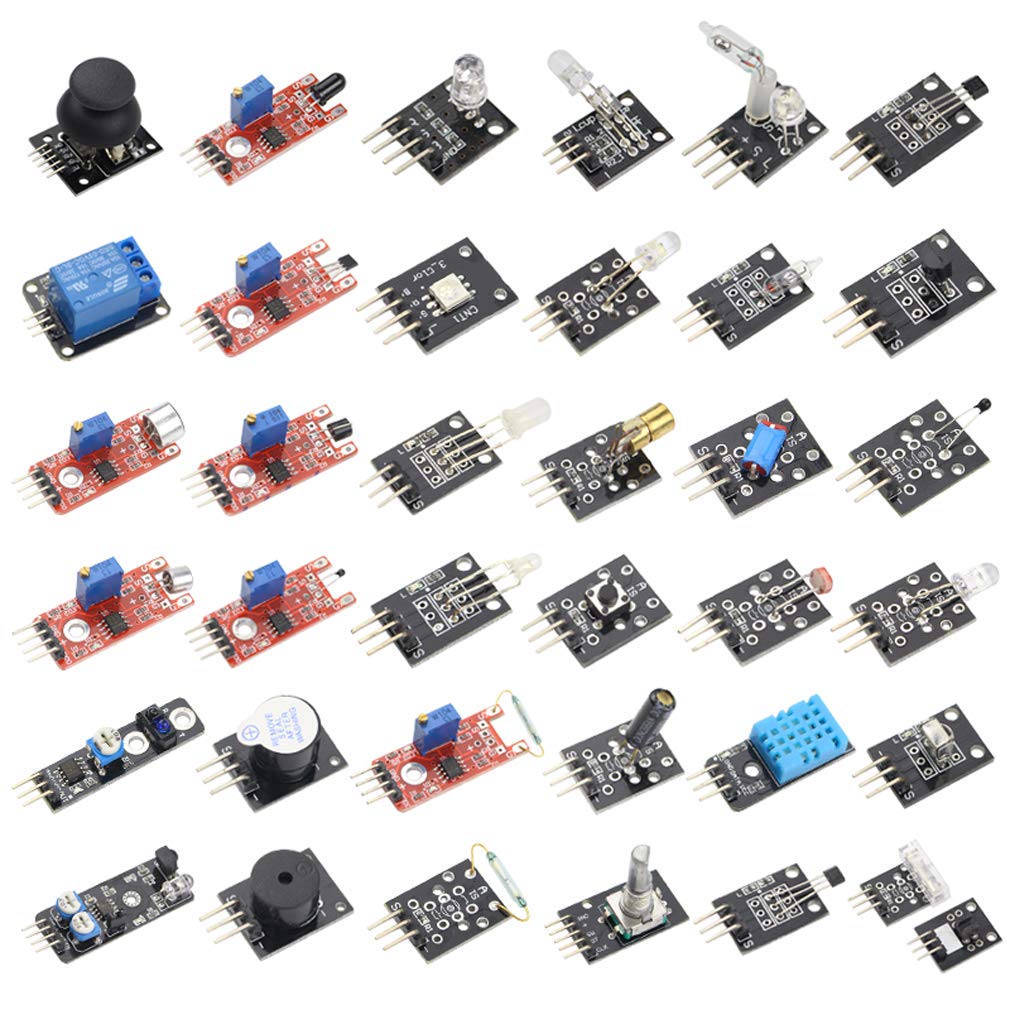
Chapitre 5

Le Processus de Sourcing de Capteurs
Le processus de sourcing de capteurs est une approche systématique conçue pour garantir que les capteurs appropriés soient sélectionnés pour votre application, répondant aux exigences techniques et opérationnelles. Voici un guide étape par étape du processus :
1. Consultation et Analyse des Exigences
La première étape du processus de sourcing de capteurs consiste à mener une consultation détaillée avec le client pour comprendre ses besoins et objectifs spécifiques. Cela implique de recueillir des informations sur l’application, les spécifications de performance requises et les conditions environnementales dans lesquelles les capteurs seront utilisés. Les facteurs clés à analyser incluent :
- Exigences de l’application : Qu’est-ce que le capteur mesure, et comment doit-il fonctionner dans votre système ?
- Spécifications de performance : Précision souhaitée, temps de réponse, plage et sensibilité.
- Conditions environnementales : Température de fonctionnement, humidité, exposition aux produits chimiques ou contraintes physiques.
Une analyse approfondie des exigences aide à définir les types de capteurs les plus appropriés et les options de personnalisation nécessaires, garantissant ainsi la bonne adaptation à votre projet.
2. Sélection du Fournisseur
Sur la base des exigences recueillies, l’étape suivante consiste à sélectionner des fournisseurs potentiels capables de répondre à vos besoins. Les critères clés pour évaluer les fournisseurs incluent :
- Réputation : Le fournisseur a-t-il une réputation établie dans la fourniture de capteurs de haute qualité pour votre industrie ?
- Expérience : Le fournisseur a-t-il de l’expérience avec le type de capteur spécifique et l’application que vous nécessitez ?
- Assurance qualité : Quels sont les tests, les certifications et les procédures de contrôle qualité que le fournisseur suit ?
La demande d’échantillons et les tests préliminaires vous permettent d’évaluer les performances, la fiabilité et la convenance des capteurs avant de prendre une décision finale.
3. Devis et Négociation
Une fois que vous avez sélectionné des fournisseurs potentiels, il est temps de demander des devis en fonction de vos exigences. Au cours de cette étape, vous discuterez des détails importants tels que :
- Prix : Assurez-vous que le coût correspond à votre budget tout en répondant aux attentes de qualité.
- Calendriers de livraison : Confirmez les délais de livraison et les calendriers de livraison des capteurs.
- Conditions de garantie : Examinez les conditions de garantie, y compris la durée, la couverture et le soutien après-vente.
Une négociation claire et ouverte aide à éviter les malentendus et à garantir que tous les termes soient bien définis et documentés avant de poursuivre.
4. Tests et Assurance Qualité
Avant de passer commande, il est crucial de réaliser des tests complets pour vérifier les performances, la fiabilité et la conformité du capteur à vos spécifications. Cela peut impliquer :
- Tests internes : Évaluez les capteurs dans des conditions réelles pour garantir qu’ils répondent aux exigences techniques.
- Tests par des tiers : L’engagement d’un laboratoire de tests indépendant ajoute une autre couche de garantie concernant la qualité et la fiabilité du capteur.
Des procédures d’assurance qualité approfondies aideront à confirmer que les capteurs fonctionneront comme prévu dans votre application.
5. Placement de Commande et Production
Une fois que les capteurs ont passé tous les tests et répondent aux normes requises, vous pouvez passer commande et initier la production. Il est important de maintenir une communication continue avec le fournisseur tout au long de la phase de production pour :
- Surveiller la progression de la production.
- Aborder tout problème potentiel rapidement.
- Garantir que les délais et les normes de qualité soient respectés.
Une surveillance étroite pendant la production aide à atténuer le risque de retards ou d’erreurs de production.
6. Livraison et Support d’Intégration
La dernière étape consiste à garantir la livraison ponctuelle des capteurs à votre emplacement. Après la livraison, un support d’intégration est crucial pour garantir une installation et une fonctionnalité en douceur dans votre système. Cela peut inclure :
- Aide technique : Fournir l’expertise sur l’intégration des capteurs, l’étalonnage et la configuration.
- Dépannage : Résoudre tout problème qui survient pendant l’installation ou les tests initiaux.
- Formation : Offrir des séances de formation pour aider votre équipe à comprendre comment utiliser et maintenir efficacement les capteurs.
En suivant ce processus bien défini, vous pouvez garantir que vous sourcez des capteurs de haute qualité qui répondent parfaitement aux exigences de votre projet, réduisant ainsi la probabilité de retards, de problèmes de performance ou de coûts imprévus.
Chapitre 6
Évaluation et sélection des fournisseurs
Choisir le bon fournisseur est l’une des étapes les plus importantes du processus d’approvisionnement en capteurs, car cela a un impact direct sur la qualité, la fiabilité et la rentabilité des capteurs que vous achetez. Voici les critères clés à considérer lors de l’évaluation et de la sélection d’un fournisseur :
1. Réputation et expérience
<p-La réputation et l'expérience du fournisseur dans l'industrie jouent un rôle important dans la détermination de la qualité des services et des produits qu'il fournit. Un fournisseur avec un solide bilan est plus susceptible de fournir des capteurs qui répondent à vos exigences de performance. Pour évaluer la réputation d'un fournisseur :- Recherchez les avis et les témoignages des clients pour évaluer la satisfaction des autres clients.
- Les études de cas peuvent fournir des informations sur l’expérience du fournisseur dans des applications similaires, démontrant sa capacité à répondre aux besoins uniques de votre projet.
- Les fournisseurs qui ont une longue histoire de travail avec des entreprises ou des industries bien connues sont souvent plus fiables, car leur expérience garantit une meilleure performance et une meilleure qualité de produit.
2. Pratiques d’assurance qualité
Un système d’assurance qualité (AQ) robuste garantit que les capteurs que vous recevez répondent à vos spécifications requises et sont exemptes de défauts. Évaluez les pratiques de qualité du fournisseur en considérant :
- Procédures de test : Le fournisseur effectue-t-il des tests complets à différentes étapes de la production pour garantir la qualité ?
- Certifications : Vérifiez si le fournisseur détient des certifications internationalement reconnues, telles que l’ISO 9001, indiquant son engagement à maintenir des normes de qualité élevées.
- Mesures de contrôle de la qualité : Comment le fournisseur surveille-t-il et contrôle-t-il la qualité de ses capteurs tout au long de la production ? Recherchez la transparence dans leurs processus AQ, y compris les tests par lots, les vérifications tierces et la documentation traçable.
Assurez-vous que le fournisseur peut fournir une documentation d’assurance qualité, telle que des certificats de conformité, des rapports de test et des spécifications de matériaux, pour étayer ses allégations de qualité.
3. Expertise technique
L’évaluation de l’expertise technique d’un fournisseur est cruciale, en particulier lorsque des capteurs sur mesure ou des solutions spécialisées sont nécessaires. Les fournisseurs ayant une solide connaissance technique peuvent fournir des conseils précieux et garantir que les capteurs répondent aux besoins spécifiques de votre application. Les aspects clés à considérer incluent :
- Connaissance des technologies de capteurs : Le fournisseur a-t-il une expertise approfondie dans les dernières technologies et innovations de capteurs ?
- Capacités de conception et de matériaux : Le fournisseur peut-il offrir des matériaux ou des conceptions de capteurs spécialisés adaptés à votre environnement ou à votre industrie ?
- Capacités de personnalisation : Si vous avez besoin de capteurs avec des fonctionnalités spécifiques (par exemple, une plage de détection personnalisée, une taille ou une sensibilité), assurez-vous que le fournisseur a la capacité de fournir ces solutions sur mesure de manière efficace.
Un fournisseur ayant une solide expertise technique peut également aider à résoudre des problèmes d’intégration et de dépannage complexes, garantissant ainsi un déploiement et une performance plus fluides.
4. Support client
Un excellent support client est essentiel pour résoudre tout problème qui peut survenir pendant le processus d’approvisionnement ou après la livraison des capteurs. Évaluez le niveau de support que le fournisseur offre en considérant :
- Réactivité : Le fournisseur répond-il rapidement aux demandes et aux préoccupations ? Un fournisseur qui réagit rapidement peut aider à éviter les retards dans votre projet.
- Assistance technique : Le fournisseur offre-t-il un soutien continu pour l’intégration des capteurs, le dépannage et l’étalonnage ? C’est particulièrement important pour les systèmes complexes.
- Formation et service après-vente : Le fournisseur fournit-il une formation à votre équipe sur le fonctionnement et la maintenance des capteurs ? Propose-t-il un service après-vente pour aider à résoudre tout problème après la livraison ?
Le niveau de service client peut avoir un impact significatif sur l’expérience globale de l’approvisionnement en capteurs, ce qui en fait un facteur crucial dans la sélection des fournisseurs.
5. Prix et conditions
Enfin, le coût et les conditions de l’approvisionnement en capteurs doivent correspondre à votre budget et à vos exigences de projet. Cependant, il est essentiel de trouver un équilibre entre le prix et la qualité – les options les moins chères ne proposent pas toujours la meilleure valeur à long terme. Considérez les points suivants :
- Comparaison des prix : Rassemblez des devis de plusieurs fournisseurs pour vous assurer que les prix sont compétitifs. Évaluez ce qui est inclus dans le prix (par exemple, les garanties, les tests, la documentation, les frais de livraison).
- Calendriers de livraison : Assurez-vous que le fournisseur peut respecter vos délais de livraison requis. Les retards dans la livraison peuvent avoir un impact significatif sur le calendrier de votre projet.
- Conditions de garantie : Assurez-vous que le fournisseur offre des conditions de garantie favorables pour protéger votre investissement en cas de défauts ou de problèmes de performance.
- Conditions de paiement : Négociez des conditions de paiement claires et favorables qui conviennent à votre budget et à vos besoins de trésorerie.
En examinant attentivement la structure de prix et les conditions du fournisseur, vous pouvez prendre une décision plus éclairée qui maximise votre investissement tout en garantissant une livraison de capteurs fiable et ponctuelle.

Chapitre 7
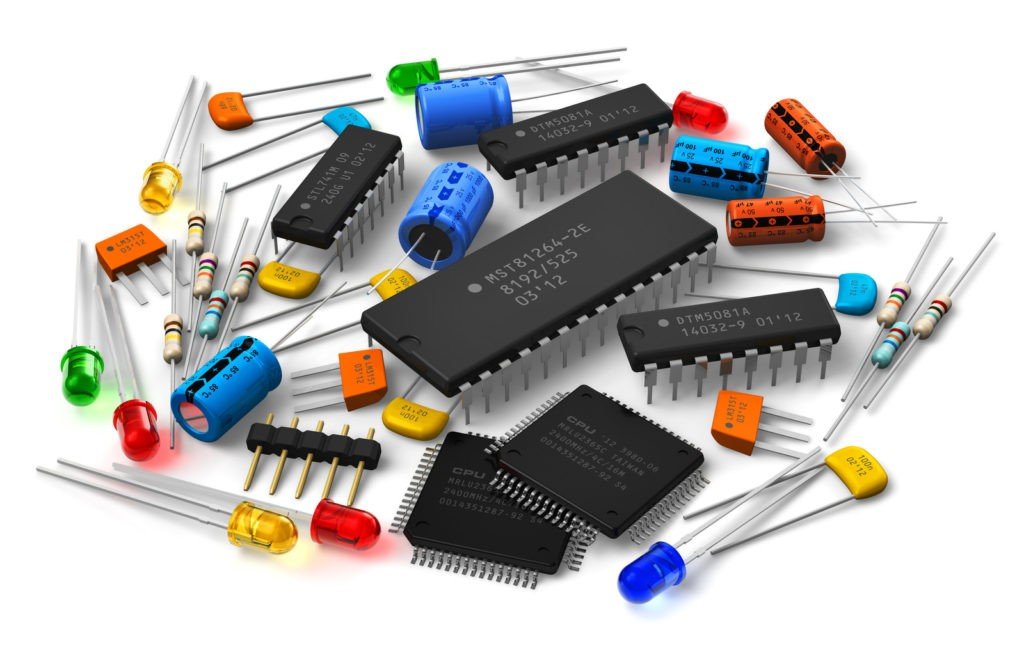
Gestion de la Chaîne d'Approvisionnement
Une gestion efficace de la chaîne d’approvisionnement est essentielle pour assurer la livraison à temps et la rentabilité des capteurs, ce qui en fait un facteur critique pour une approvisionnement réussie. Les stratégies suivantes peuvent aider à rationaliser le processus et à garantir que votre approvisionnement en capteurs se déroule sans heurts :
1. Logistique et Livraison
Une gestion logistique efficace est la clé pour garantir que les capteurs soient livrés à temps et en bon état. Les actions clés à prendre incluent :
- Coordination avec les fournisseurs : Restez en communication étroite avec les fournisseurs pour garantir que les délais de livraison soient respectés. Cela inclut la confirmation des délais de livraison et des détails d’expédition bien à l’avance.
- Gestion des horaires de livraison : Planifiez et surveillez soigneusement les horaires de livraison pour éviter les retards, en particulier pour les expéditions internationales qui peuvent être soumises à des formalités douanières.
- Gestion des formalités douanières : Pour les approvisionnements internationaux, travaillez avec des partenaires logistiques expérimentés qui sont familiers avec les réglementations et les procédures douanières pour éviter les retards aux frontières.
Choisir des partenaires logistiques fiables et planifier les retards imprévus peut aider à minimiser les perturbations dans la chaîne d’approvisionnement et à garantir la livraison à temps.
2. Gestion des Stocks
Le maintien d’un stock optimal de capteurs est crucial pour éviter les ruptures de stock et les surstocks, qui peuvent entraîner des perturbations opérationnelles ou des coûts excessifs. Les pratiques de gestion des stocks clés incluent :
- Suivi des niveaux de stock : Mettez en place un système de gestion des stocks pour surveiller les niveaux de stock en temps réel. Cela vous permet de rester au courant de vos stocks et d’éviter les pénuries ou les excédents.
- Prévision de la demande : Utilisez les données historiques et les tendances du marché pour prévoir la demande future de capteurs. Une prévision de la demande précise aide à éviter les retards dus aux ruptures de stock tout en prévenant les surcommandes.
- Gestion des réapprovisionnements : Mettez en place des déclencheurs de réapprovisionnement qui passent automatiquement de nouvelles commandes lorsque le stock tombe en dessous d’un certain seuil, garantissant un approvisionnement continu de capteurs sans excédent de stock.
Une gestion efficace des stocks aide à maintenir un flux régulier de capteurs tout en réduisant les coûts de stockage et en améliorant la trésorerie.
3. Optimisation des Coûts
Les stratégies d’optimisation des coûts garantissent que vous restez dans les limites de votre budget tout en maintenant la qualité des capteurs. Considérez les actions suivantes pour réduire les coûts :
- Négociation de remises en vrac : Travaillez avec les fournisseurs pour sécuriser des remises sur les commandes importantes ou les contrats à long terme. L’achat en vrac peut réduire considérablement le coût unitaire des capteurs.
- Optimisation des itinéraires de livraison : En travaillant avec des fournisseurs logistiques expérimentés, vous pouvez identifier les itinéraires de livraison les plus rentables, réduisant ainsi les coûts de transport et les délais de livraison.
- Exploitation des économies d’échelle : Si votre organisation nécessite de grandes quantités de capteurs, profitez des économies d’échelle pour négocier de meilleurs prix, potentiellement avec des remises basées sur le volume.
La collaboration avec les fournisseurs pour identifier des solutions rentables garantit que vous obtenez la meilleure valeur sans compromettre la qualité des capteurs.
4. Gestion des Risques
Les perturbations de la chaîne d’approvisionnement sont inévitables, il est donc essentiel de développer un plan solide de gestion des risques. Les stratégies pour minimiser les risques incluent :
- Diversification des fournisseurs : S’appuyer sur un seul fournisseur peut vous exposer à des risques importants en cas de problèmes. Considérez plusieurs fournisseurs de différentes régions pour réduire la probabilité d’une perturbation complète.
- Maintien d’un stock de sécurité : Gardez un stock tampon de capteurs essentiels en cas de retards ou de pénuries d’approvisionnement. Cela aide à atténuer l’impact des perturbations imprévues.
- Plans de contingence : Ayez des plans de contingence en place pour les perturbations courantes de la chaîne d’approvisionnement, telles que les retards, les problèmes de livraison ou les défauts de produits. Réexaminez et mettez à jour régulièrement ces plans pour vous adapter à de nouveaux défis.
La gestion proactive des risques garantit que votre chaîne d’approvisionnement reste résiliente face aux perturbations potentielles.
En mettant en œuvre ces stratégies, vous pouvez gérer efficacement votre chaîne d’approvisionnement, en garantissant que les capteurs appropriés soient disponibles lorsqu’ils sont nécessaires, à des prix compétitifs et avec un minimum de retards. Cela conduit à un flux de matériaux plus fiable et plus rentable, soutenant finalement le succès de vos projets.
Chapitre 8
Garantir la fiabilité et le soutien à long terme
Garantir la fiabilité et le soutien à long terme de vos capteurs est crucial pour maintenir les performances optimales, minimiser les temps d’arrêt et prolonger la durée de vie de vos systèmes. Voici comment garantir que vos capteurs continuent de répondre à vos besoins avec le temps :
1. Garantie et service après-vente
Choisissez des fournisseurs qui offrent des garanties étendues et un service après-vente complet pour protéger les performances de vos capteurs :
- Garanties étendues : Une période de garantie plus longue vous donne la tranquillité d’esprit que le capteur continuera à fonctionner comme prévu et réduit le risque de coûts de réparation ou de remplacement imprévus.
- Service après-vente : Recherchez des fournisseurs qui offrent un soutien continu après la vente initiale. Cela inclut le dépannage, les réparations ou les remplacements en cas de problèmes, garantissant que vos capteurs continuent de fonctionner de manière fiable avec le temps.
Une garantie solide et un service après-vente offrent une protection à long terme et améliorent la valeur globale de vos investissements dans les capteurs.
2. Relations avec les fournisseurs à long terme
Établir des relations solides et à long terme avec vos fournisseurs est crucial pour un soutien et une amélioration continus :
- Communication régulière : Établissez des lignes de communication ouvertes pour résoudre rapidement tout problème. En cultivant une relation collaborative, vous pouvez vous assurer que tout problème est identifié et résolu promptement.
- Confiance et fiabilité : Travailler avec un fournisseur de confiance peut conduire à des avantages mutuels, tels que de meilleurs prix, un soutien prioritaire et la possibilité d’accéder à des solutions personnalisées adaptées à vos besoins évolutifs.
- Collaboration avec les fournisseurs : Les relations à long terme créent des opportunités d’innovation et d’amélioration, permettant à votre fournisseur de mieux comprendre vos besoins et d’offrir des solutions qui s’alignent sur vos objectifs commerciaux.
En maintenant une relation cohérente avec les fournisseurs, vous pouvez vous assurer d’avoir le soutien dont vous avez besoin à mesure que vos exigences évoluent avec le temps.
3. Maintenance et étalonnage
L’entretien régulier et l’étalonnage sont essentiels pour garantir que vos capteurs continuent de fournir des lectures précises et fiables :
- Calendriers de maintenance : Établissez des calendriers de maintenance régulière pour inspecter et nettoyer les capteurs, vérifier l’usure et la détérioration, et garantir un fonctionnement correct.
- Procédures d’étalonnage : Établissez des procédures standard pour étalonner les capteurs à des intervalles spécifiés pour maintenir la précision. C’est particulièrement important pour les capteurs utilisés dans des applications de précision comme les appareils médicaux ou les systèmes industriels.
- Soutien du fournisseur : Travaillez avec vos fournisseurs pour établir des protocoles de maintenance clairs et accéder à leurs services d’étalonnage, garantissant que vos capteurs restent en condition optimale avec le temps.
Un entretien et un étalonnage appropriés aident à prolonger la durée de vie de vos capteurs et à prévenir la dégradation des performances.
4. Amélioration continue
Tenez le rythme des progrès de la technologie des capteurs pour rester compétitif et garantir le succès à long terme :
- Adopter de nouvelles technologies : Restez informé des dernières innovations en matière de technologies de capteurs, telles que les capteurs intelligents et l’intégration de l’Internet des objets, pour améliorer les capacités de vos systèmes.
- Améliorer le contrôle de la qualité : Évaluez et mettez à jour régulièrement vos procédures de contrôle de la qualité pour garantir que les capteurs répondent aux normes les plus élevées.
- Optimiser la gestion de la chaîne d’approvisionnement : Évaluez et affinez continuellement vos processus de chaîne d’approvisionnement pour améliorer l’efficacité, réduire les coûts et relever les défis émergents.
En adoptant l’amélioration continue, vous pouvez vous assurer que vos pratiques d’approvisionnement en capteurs restent alignées sur les tendances et les meilleures pratiques de l’industrie, améliorant ainsi les performances et la longévité de vos systèmes.
Garantir la fiabilité et le soutien à long terme maintiendra vos capteurs en fonctionnement optimal, fournissant des performances constantes et une valeur à vos projets, tout en renforçant votre relation avec les fournisseurs et les clients.
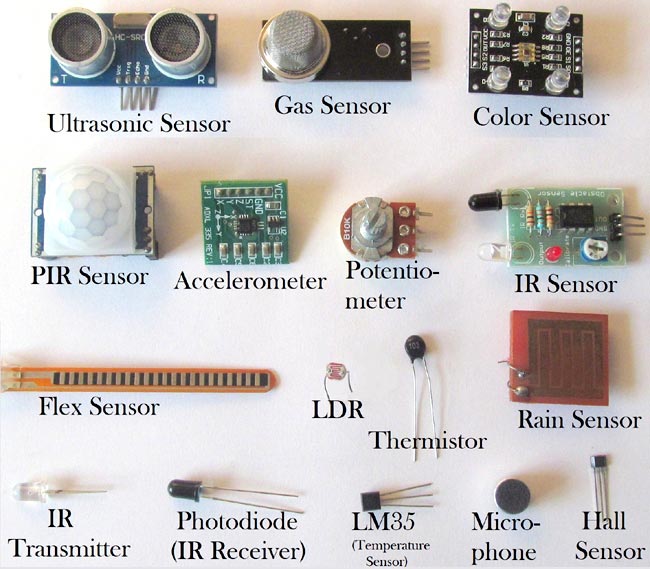
Chapitre 9

Adressez les défis courants de l'approvisionnement en capteurs
L’approvisionnement en capteurs, bien qu’essentiel, peut présenter plusieurs défis qui peuvent affecter la qualité, la rapidité et la réussite globale de vos projets. Voici comment résoudre certains des problèmes les plus courants :
1. Lutter contre les contrefaçons
Les capteurs contrefaits posent un risque significatif pour les performances et la fiabilité de vos systèmes. Ces capteurs peuvent ne pas répondre aux spécifications requises, ce qui entraîne des défaillances opérationnelles. Pour éviter les contrefaçons :
- Travaillez avec des fournisseurs réputés : assurez-vous que vos fournisseurs respectent des pratiques de garantie de qualité strictes et ont une histoire de livraison de capteurs authentiques et de haute qualité.
- Vérifiez l’authenticité : effectuez des tests tiers pour vérifier que les capteurs répondent aux normes requises. Demandez la documentation de garantie de qualité, telle que des certificats de conformité, des rapports de test et des spécifications de matériau, pour garantir l’authenticité.
- Demandez des échantillons de produits : tester des échantillons avant les commandes en gros peut fournir une couche supplémentaire de garantie contre les produits contrefaits.
En prenant ces précautions, vous pouvez réduire considérablement le risque que les capteurs contrefaits affectent vos opérations.
2. Surmonter les barrières de communication
Une communication efficace est vitale, en particulier lorsqu’on travaille avec des fournisseurs internationaux qui peuvent avoir des langues et des normes culturelles différentes. Pour surmonter les barrières de communication :
- Communication claire et concise : utilisez un langage simple et direct pour éviter les malentendus. Assurez-vous que toutes les spécifications techniques, les délais et les exigences soient communiqués clairement.
- Utilisez des services de traduction : si les différences de langue sont importantes, envisagez d’utiliser des services de traduction professionnels pour assurer une communication précise et prévenir les erreurs dans votre commande.
- Établissez des canaux de communication réguliers : organisez des réunions régulières (virtuelles ou en face à face) pour examiner les progrès, clarifier les détails et vous assurer que les deux parties sont sur la même longueur d’onde tout au long du processus d’approvisionnement.
Des pratiques de communication solides aident à combler les lacunes et à garantir que toutes les parties sont alignées sur les attentes et les livrables.
3. Gérer les délais de livraison
Les délais de livraison longs peuvent perturber les délais de projet, retarder les livraisons et augmenter les coûts. Pour gérer efficacement les délais de livraison :
- Planifiez à l’avance : commencez le processus d’approvisionnement le plus tôt possible pour tenir compte des délais de livraison plus longs. Prenez en compte les retards potentiels des fournisseurs, des douanes ou de la logistique d’expédition lors de la fixation des délais.
- Maintenez des niveaux de stock optimaux : en gardant un stock tampon de capteurs critiques, vous pouvez éviter les perturbations en cas de retards inattendus.
- Travaillez avec les fournisseurs pour établir des horaires de livraison fiables : négociez avec les fournisseurs pour des délais de livraison réalistes et confirmez leur capacité à respecter les délais. Si le temps est critique, explorez les options d’expédition urgente pour raccourcir les délais de livraison.
Une planification proactive et une gestion des stocks peuvent aider à atténuer les risques posés par les délais de livraison longs.
4. Assurer la cohérence de la qualité
Maintenir une qualité cohérente sur de grandes commandes peut être difficile, en particulier lorsqu’on travaille avec plusieurs fournisseurs ou des productions de grande série. Pour assurer la cohérence de la qualité :
- Mettez en œuvre des procédures de contrôle de la qualité strictes : assurez-vous que le fournisseur effectue des tests de lot et des inspections de la qualité à différentes étapes de la production. Cela aidera à identifier toute déviation par rapport aux spécifications convenues avant l’expédition.
- Établissez des normes de qualité claires : définissez clairement vos exigences de qualité avec le fournisseur, y compris les niveaux de tolérance, les métriques de performance et les normes de durabilité.
- Collaborez avec les fournisseurs pour résoudre les problèmes : maintenez une communication ouverte avec vos fournisseurs et résolvez rapidement toute préoccupation liée à la qualité. Une résolution rapide des problèmes aide à maintenir des normes élevées et à prévenir les problèmes récurrents.
En vous concentrant sur le contrôle de la qualité et en établissant des relations solides avec les fournisseurs, vous pouvez assurer la cohérence de la qualité de vos capteurs.
Conclusion
En résolvant de manière proactive ces défis courants – la contrefaçon, les barrières de communication, la gestion des délais de livraison et la cohérence de la qualité – vous pouvez garantir un processus d’approvisionnement en capteurs plus fluide et plus efficient. En prenant les précautions nécessaires et en établissant des relations solides avec les fournisseurs, vous pouvez minimiser les risques, améliorer la fiabilité et maximiser l’efficacité de vos opérations d’approvisionnement.
Chapitre 10
Tendances futures dans la technologie des capteurs
Le domaine de la technologie des capteurs évolue rapidement, avec des progrès continus dans les matériaux, la conception et les applications. Rester à la pointe de ces tendances est crucial pour les entreprises qui cherchent à intégrer des capteurs de pointe dans leurs systèmes. Voici quelques-unes des tendances clés à surveiller :
1. Innovations et technologies émergentes
De nouveaux matériaux et des technologies émergentes sont à l’origine du développement de capteurs plus avancés avec des performances améliorées et de nouvelles capacités :
- Nouveaux matériaux : Des matériaux comme le graphène et les polymères flexibles ouvrent de nouvelles possibilités pour les capteurs. Le graphène, par exemple, offre une conductivité et une force incroyables, ce qui en fait un matériau idéal pour des capteurs ultra-sensibles. Les polymères flexibles permettent la création de capteurs pliables et étirables, qui peuvent être utilisés dans les dispositifs portables et les électroniques flexibles.
- MEMS (Systèmes micro-électro-mécaniques) : La technologie MEMS permet le développement de capteurs minuscules et très efficaces avec des applications dans plusieurs industries, allant de l’automobile aux dispositifs médicaux. Ces capteurs deviennent plus petits, plus puissants et capables de réaliser des tâches plus complexes tout en consommant moins d’énergie.
- IoT (Internet des objets) : L’IoT pousse l’intégration de capteurs intelligents qui peuvent collecter, transmettre et traiter des données en temps réel. Ces capteurs sont une partie intégrante des systèmes connectés, où ils aident à entraîner l’automatisation et à améliorer l’efficacité opérationnelle dans des industries telles que les maisons intelligentes, les soins de santé et la fabrication.
À mesure que ces innovations continuent de progresser, les stratégies d’approvisionnement en capteurs devront s’adapter pour prendre en compte les nouvelles technologies de capteurs, les matériaux et les capacités. Cela signifie travailler avec des fournisseurs visionnaires qui développent et adoptent ces nouvelles technologies.
2. Durabilité et considérations environnementales
À mesure que l’attention mondiale se tourne vers la durabilité, la technologie des capteurs évolue également pour répondre aux objectifs environnementaux :
- Capteurs écologiques : Il existe une demande croissante pour des capteurs fabriqués à partir de matériaux durables qui ont un impact environnemental minimal. Les fabricants se concentrent sur la création de capteurs non toxiques, biodégradables ou fabriqués à partir de matériaux recyclés.
- Efficacité énergétique : Les capteurs futurs sont conçus pour consommer moins d’énergie tout en maintenant ou en améliorant les performances. C’est particulièrement important dans des applications comme les dispositifs portables, la détection à distance et l’IoT, où une faible consommation d’énergie peut prolonger la durée de vie de la batterie et réduire l’impact environnemental.
- Recyclabilité : Dans le cadre de la tendance plus large vers la durabilité, les fabricants de capteurs explorent également des moyens de concevoir des capteurs qui peuvent être facilement recyclés à la fin de leur cycle de vie, contribuant ainsi à réduire les déchets électroniques.
En ce qui concerne l’approvisionnement en capteurs, il est important de donner la priorité à la durabilité en sélectionnant des fournisseurs qui sont engagés dans le développement de technologies vertes et de produits respectueux de l’environnement. Cela aide à aligner les objectifs sur les exigences réglementaires et les objectifs de responsabilité sociale des entreprises (RSE).
3. Analyse de données améliorée
L’intégration de l’analyse de données avancée et de l’apprentissage automatique avec la technologie des capteurs transforme la façon dont les données sont traitées et utilisées :
- Traitement de données en temps réel : Les capteurs intelligents futurs ne collecteront pas seulement des données, mais les traiteront également en temps réel. Cela permet une prise de décision plus rapide et permet des réponses immédiates aux conditions changeantes, ce qui est crucial dans des applications telles que l’automatisation industrielle, les soins de santé et les véhicules autonomes.
- Amélioration de la prise de décision : En intégrant des algorithmes d’apprentissage automatique, les capteurs peuvent apprendre des données passées et améliorer leur exactitude et leurs capacités de prédiction. Cela permet un suivi plus précis, un diagnostic et une optimisation des systèmes, conduisant à une meilleure gestion des ressources et à des économies de coûts.
- Connaissances actionnables : Les capteurs équipés de capacités d’analyse avancées peuvent fournir des connaissances plus précises et actionnables, permettant aux entreprises d’optimiser leurs opérations, de réduire les déchets et de prendre des décisions plus éclairées.
À mesure que les capteurs deviennent plus intelligents et capables d’analyser leurs propres données, les stratégies d’approvisionnement en capteurs devront prendre en compte les fournisseurs qui offrent des capteurs avancés avec des capacités d’analyse intégrées.
Rester informé de ces tendances futures aide les entreprises à s’adapter aux technologies et aux exigences du marché en évolution, en veillant à ce que leurs stratégies d’approvisionnement en capteurs restent compétitives et efficaces dans un paysage en constante évolution. En anticipant ces développements, les entreprises peuvent se positionner pour tirer parti de la prochaine génération de capteurs, stimulant l’innovation et l’efficacité dans leurs opérations.

Contactez-Nous
Où Sommes-Nous ?
Parc Industriel, No. 438 Route Donghuan, No. 438, Shajing Donghuan Road, District Bao'an, Shenzhen, Guangdong, Chine
4ème étage, Bâtiment Zhihui Créatif, No. 2005 Route Xihuan, Shajing, District Baoan, Shenzhen, Chine
CHAMBRE A1-13, ÉTAGE 3, CENTRE INDUSTRIEL YEE LIM, 2-28 RUE KWAI LOK, KWAI CHUNG HK
service@southelectronicpcb.com
Téléphone : +86 400 878 3488
Envoyez-nous un message



